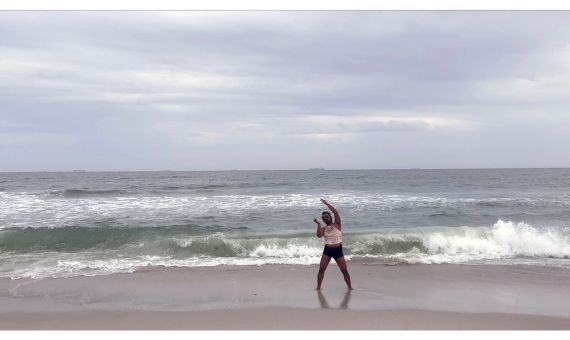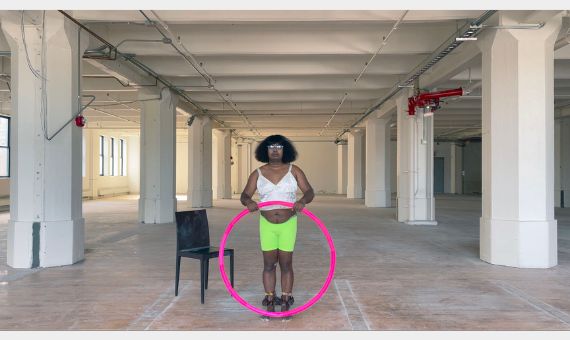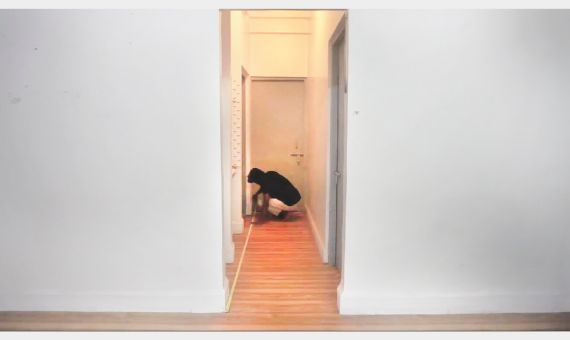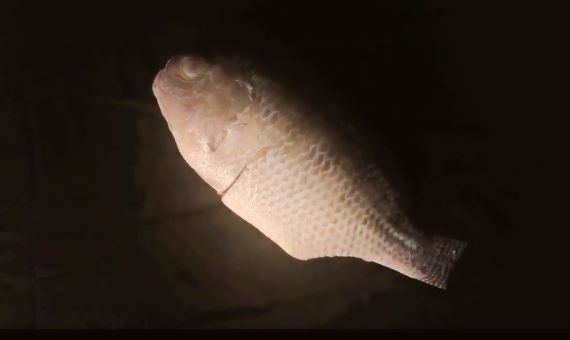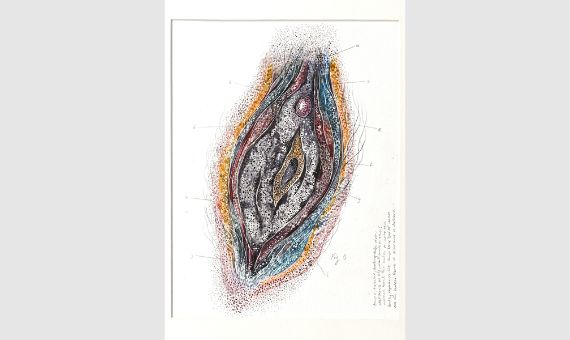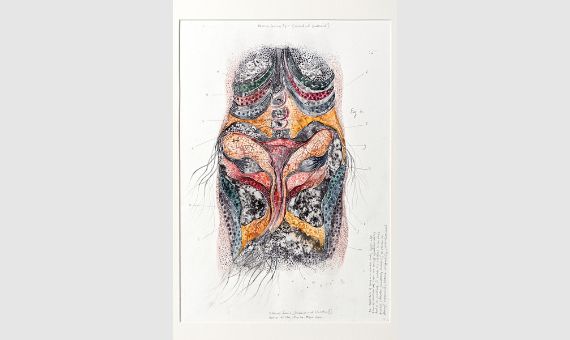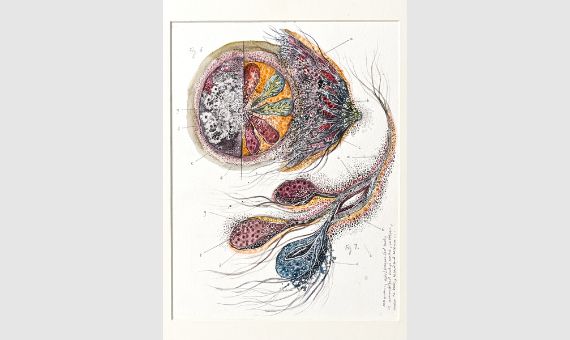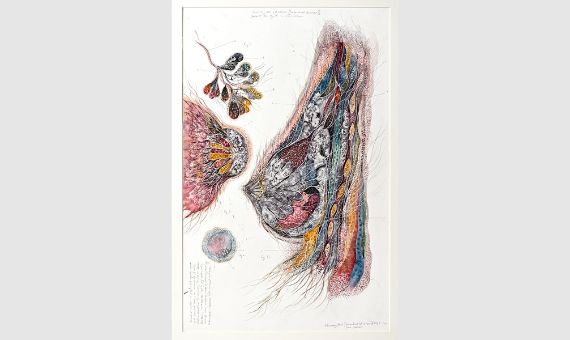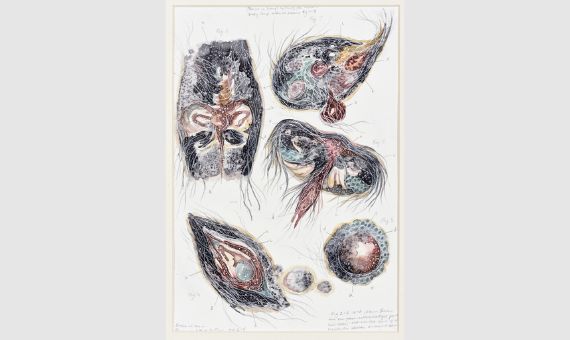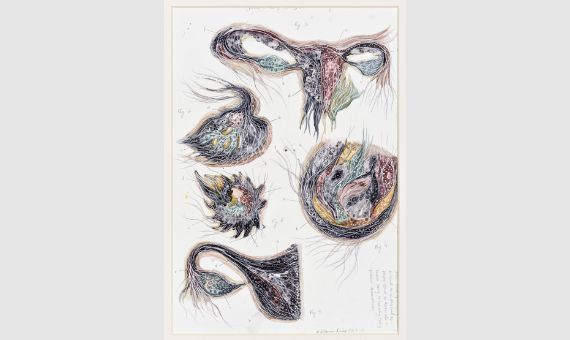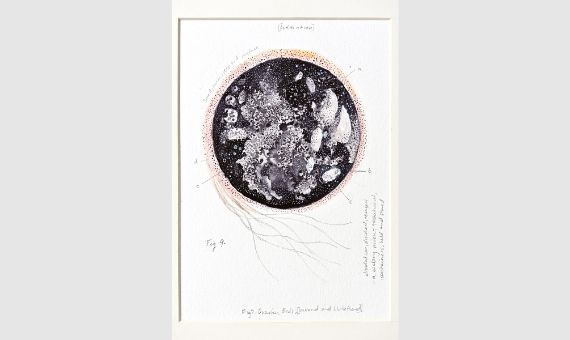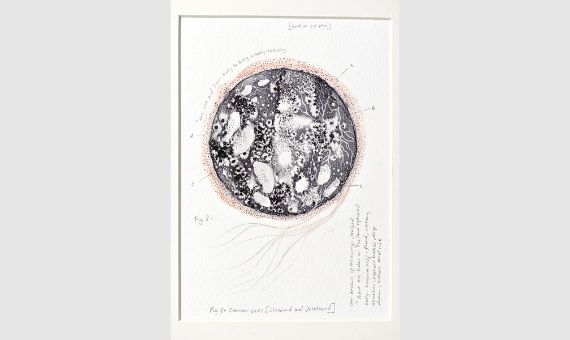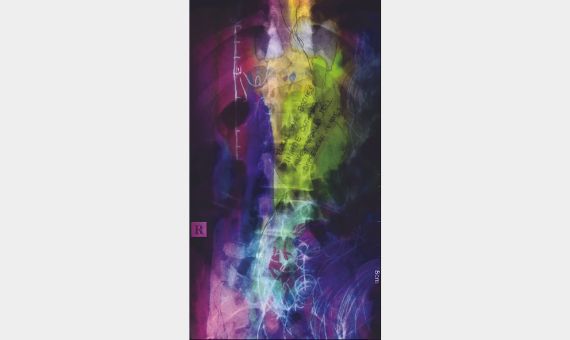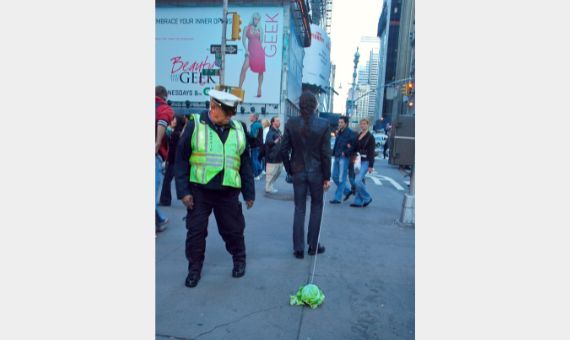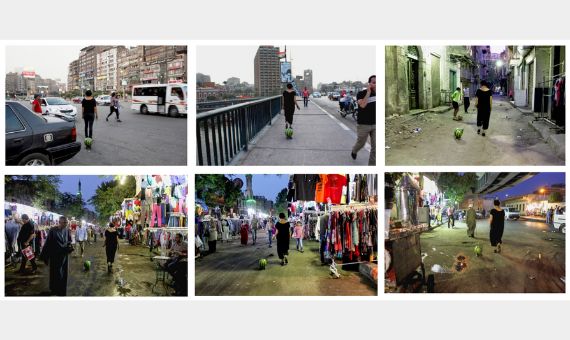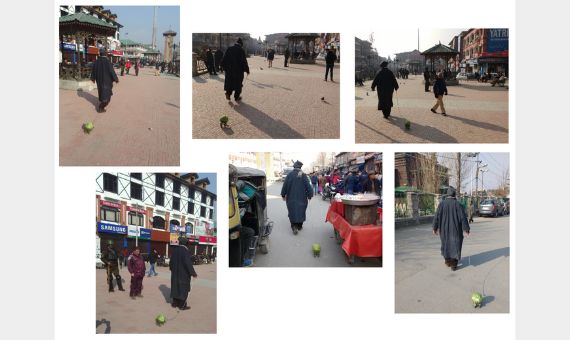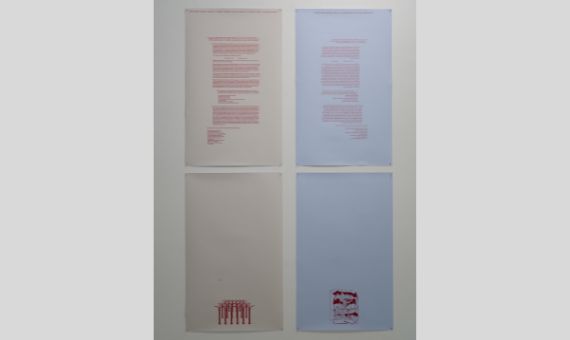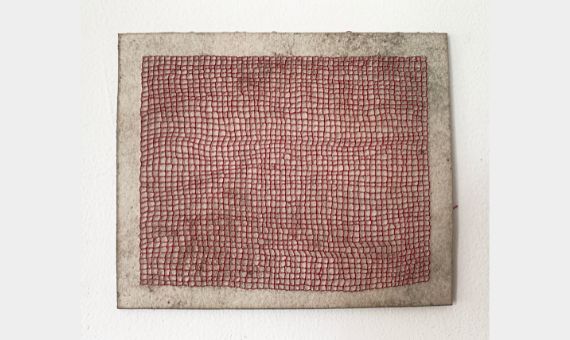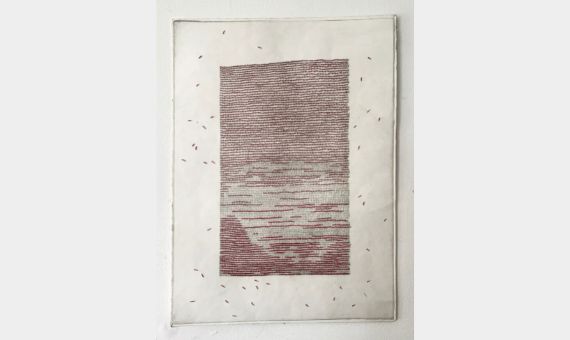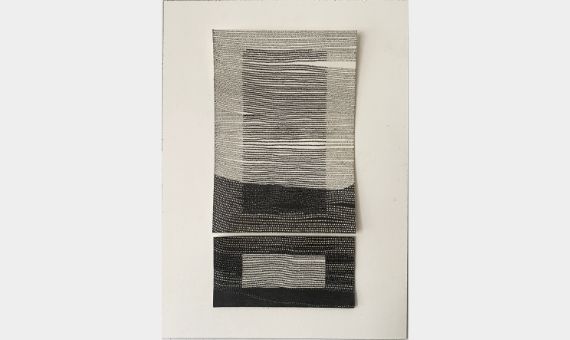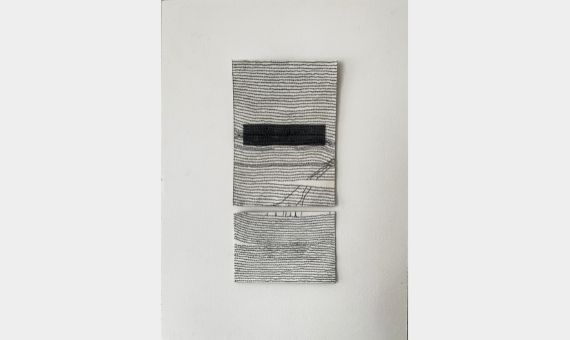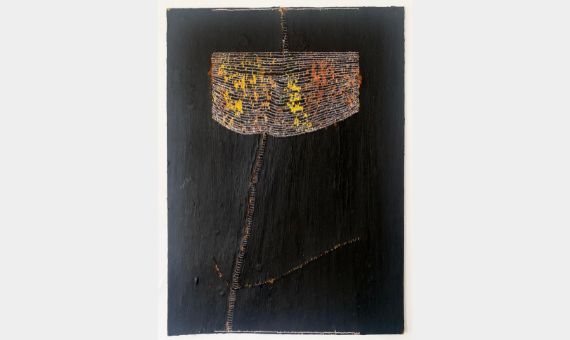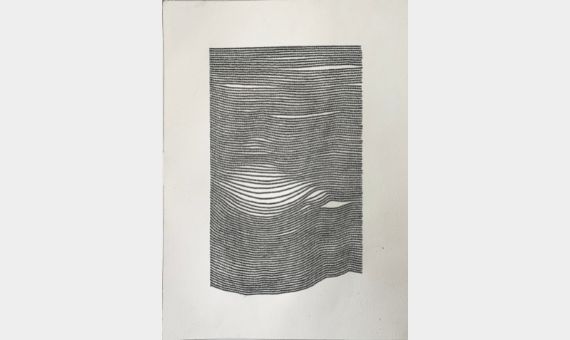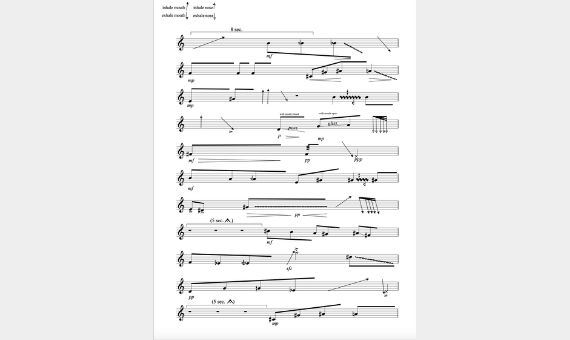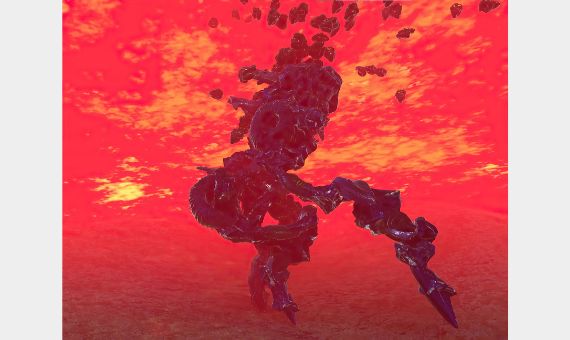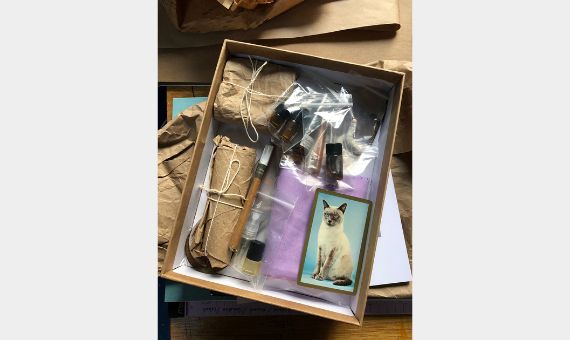About the Artists
Ali Asgar Tara
Born in 1991 in Bangladesh, Ali Asgar Tara is a transgender (she/they) artist from the Bengal Delta. As a transdisciplinary researcher, artist, activist, and scholar, Tara’s hybrid practice utilises body, space, and personal narrative (archive/ language/ history/ identity) to create political, site-responsive and community-based cross-disciplinary collaborations. Tara’s original work has been featured, exhibited, and staged across the world including the 2014 and 2016 Dhaka Art Summits, the 2016 Kolkata International Performance Festival, the 2014 Dhaka Social Art Festival, and the Asian Art Biennial. Tara has been exhibited and showcased in Defibrillator Gallery in Chicago, Space Gallery in Portland Maine, Boston Center for the Arts in Boston, Bullet Space, Panoply Performance Lab, Dixon Place, Bronx Academy of Art and Queens Museum in NYC, 7d11 Online performance festival, Trinitite square video and Onsite Gallery in Toronto, Asian Art Initiative in Philadelphia, City of Asylum in Pittsburgh and in other North American experimental performance spaces. Tara’s work has been reviewed by critique Hans Ulrich Obrist, and appeared in newspaper publications such as Dhaka Tribune, The Daily Star, The Daily Beast, Pittsburgh City Paper, and Voyage Chicago. Tara has shown their work as a visiting artist at the University of Maine, University of Connecticut, University of Illinois Urbana Champaign, Ontario College of Art and Design – OCAD, and University of California in Berkeley. Tara has earned a BFA in Printmaking from the University of Dhaka, Bangladesh, and recently an MFA in Studio from the School of the Art Institute in Chicago, USA. Tara teaches Art and Critical Race Theory at Pace University in New York as an assistant professor and runs her studio practice in Dumbo Art District, Brooklyn. Very recently they have co-founded Bangladesh Trans, Hijra, and Koti Rights Coalition, a grassroots community-based platform to connect and create space in Bangladesh.
Amol K Patil
Amol K. Patil is a conceptual and performance artist based in Mumbai. His practice is an ongoing excavation and investigation to recapture the pulsating, vibrating movements and sound of the working-class architecture peculiar to his hometown. After completing his education in visual arts, he initiated and was part of many practices with collective formations. It is in this dynamic ambience that he became interested in the crossover of performance art, kinetic installation, and video installation. His work draws from his family archive — the plays written by his father and poems by his grandfather — as well as the work and ideas of other cultural practitioners, activists and philosophers invested in an anti-caste discourse. In his recent work, Patil is expanding his research on urbanisation and the invisibility of the working class in emergent urban imaginaries. He seeks to build counter-memory and contesting narratives that describe and disturb the relationship between humans and landscapes.
Patil has shown at documenta 15 (2022); Yokohama Triennale (Yokohama, 2020); Goethe-Institute / Max Mueller Bhavan (Mumbai, 2019), Goethe-Institut / Max Mueller Bhavan (New Delhi, 2019), The Showroom (London, 2018), Tensta konsthall (Stockholm, 2017), Pompidou (Paris, 2017), Pune Biennale Habit-co Habit (Pune, 2017), New Galerie (Paris, 2016), Dakar Biennale (Dakar, 2016), Myymälä2 (Helsinki, 2015); Japan Foundation (Delhi, 2015); Stedelijk Museum (Amsterdam, 2015), International Artists Initiated, (Glasgow, 2014); Para Site, (Hong Kong, 2014); Kadist Art Foundation, (Paris, 2013).
Ashfika Rahman
Ashfika Rahman lives and works in Dhaka, Bangladesh. Her practice straddles art and documentary, drawing inspiration from historical archives that she recontextualises using contemporary media. She has a Professional Diploma in Photography from Pathshala, Dhaka, (2016) and has studied photography in Hochschule Hannover, Germany (2017). In 2018, she was selected for the Joop Swart Master Class by World Press Photo Foundation.
Rahman has held a solo show at Vitrine, Basel, and exhibited in festivals and museums internationally including Palais de Tokyo, Paris; Dhaka Art Summit (2018 & 2020); Lumix Festival (2018 & 2020), Hannover; Chobi Mela X, Dhaka; Jimei x Arles International Photo Festival, China; F3 - Freiraum for Fotografie, Berlin; FORMAT International Photography Festival, Derby, UK; Alserkal Avenue, Dubai; Objectifs, Singapore; Indian Photo Festival, Hyderabad; Muslin Festival, Bangladesh National Museum, Dhaka; Bangladesh Art Week 2021, Dhaka; Photo SCHWEIZ, Zürich. Bikaner House, New Delhi. She is a faculty member of Pathshala (South Asian Media Academy) and a member of the MAPS images agency.
Devika Sundar
Devika’s artistic and curatorial practice shifts across different mediums, threading elements of collage, painting, and printmaking with photography, assemblage and installation. Exploring art as a restorative, meditative medium and outlet, she expresses collective themes of invisibility, illness, memory and impermanence within personal and shared human experience.
Devika is an Inlaks Fine Art Awardee 2020, awarded by the Inlaks Shivdasani foundation and a Prince Clause Fund Seed Award Recipient 2021. She curated Bodies at Sea, an archival exhibition with Studio Slip at The National Centre for Biological Sciences, Bangalore. She is a presently working on an arts research project as part of the IFA Arts Research grant (2021-2022) funded by India Foundation for the Arts.
Devika has exhibited her work in a solo exhibition at Gallery Sumukha, Bangalore (2018) and in group shows at India Art Fair (2020), Delhi Contemporary Art Week (2021) with Blueprint 12 Gallery, Bikaner house with Anant Art Gallery (2021), Pushing Print (2020) with Indian Printmaker House, The Bandli Project (2019) at The Consulate of France Bangalore, among others.
Devika presented her exhibition “Essentially Normal Studies” around invisible illnesses, as a keynote speaker at MYOPAIN 2018 and In 2020 as an interdisciplinary guest lecture at Ashoka University. Devika has also written pieces around art, disability and accessibility for Marg (2021), Art India (2021), and Skin Stories, published by Point of View (2018).
Parallel to her practice, Devika runs Hanno Terrace studio, a collective open studio founded to facilitate art as a therapeutic medium of release and outlet for children and adults from diverse backgrounds. Extending themes explored within her individual practice, she develops these into an accessible and inclusive language through dialogic art group workshops and personalised exercises conducted at the studio.
Devika studied Anthropology, Art History and Visual Arts in Sarah Lawrence College, New York, and graduated with a Commendation in Contemporary Art Practice from the Srishti Institute of Art, Design.
Han Bing
Han Bing grew up in an impoverished village in rural China and studied art at Xuzhou Normal University and the Chinese Central Academy of Fine Art. He employs photography, video, multimedia installation, performance art and public interventions to bring the absurd into everyday life. His works have been shown at major international venues including the Centre Pompidou (France, 2008); Asia Triennial Manchester (UK, 2008); Rencontres d’Arles Photography Festival (France, 2007); The Crow Collection Museum, Dallas (USA, 2008); Columbia Museum of Art (USA, 2007); FOAM Fotographie Museum of Amsterdam (Netherlands, 2005). Han Bing began walking cabbages over two decades ago and has inspired hundreds of people across the world to participate in the movement.
Heba Y. Amin
Artist Heba Y. Amin engages with political themes and archival history, using mixed-media including film, photography, lecture performance and installation. Her artistic research takes a speculative, often satirical, approach to challenging narratives of conquest and control.
Amin is a Professor of Digital and Time-Based art at ABK-Stuttgart, the co-founder of the Black Athena Collective, curator of visual art for the MIZNA journal, and currently sits on the editorial board of the Journal of Digital War. She was awarded the 2020 Sussmann Artist Award for artists committed to the ideals of democracy and antifascism, and was selected as a Field of Vision Fellow, NYC (2019). Amin’s work has been shown in numerous exhibitions including The Mosaic Rooms, London (2021), the Böttcherstrasse Prize Exhibition, Bremen (2018), Eye Film Museum, Amsterdam (2020), Quai Branly Museum, Paris (2020), MAXXI Museum, Rome (2018), Liverpool Biennial (2021), 10th Berlin Biennale (2018), 15th Istanbul Biennale (2017), and 12th Dak’Art Biennale (2016), to name a few. Her latest publication, Heba Y. Amin: The General’s Stork (ed. Anthony Downey) was recently published by Sternberg Press (2020) and her works and interventions have been covered by The New York Times, The Guardian, the Intercept, and BBC among others. Furthermore, Amin is also one of the artists behind the subversive graffiti action on the set of the television series Homeland which received worldwide media attention.
Amin lives in Berlin.
Kashmiri Cabbage Walker
The Kashmiri Cabbage Walker is an anonymous individual whose work is primarily centred on walking cabbages.
Hussein Nassereddine + Kayfa ta
Hussein Nassereddine lives and works in Beirut. His work in installation, writing, video and performance originates from a practice around language that builds fragile monuments — some verbal, some sonic, some tactile — rooted in collective histories and resources of poetry, ruins, construction and image-making. Nassereddine participated in Ashkal Alwan’ HomeWorkspace program in 2018, and in 2020, he published How to see the columns as palm trees, the seventh book in the "Kayfa ta" series.
Kayfa ta is a publishing initiative that uses the popular form of how-to manuals (how=kayfa, to=ta) to respond to some of today’s perceived needs. Kayfa ta was founded in 2012 by Maha Maamoun and Ala Younis.
Ratna Gupta
Ratna Gupta’s creative practice may be seen as physical demonstration/ playing out of the complex and sometimes painful negotiations and resolutions of personal, psycho-emotional contradictions. However, her work does not restrict itself to self-referential indulgence. While the ‘self’ has a strong presence in her work, she rejects direct figurative representation for a more actively conceptual/ sculptural way of rendering the living figure inscribed by all its contradictions and fragilities. She is also interested in undermining the earth-body binary. From here the artist speculates on the ways in which this rift has been further fuelled by our culture of consumption.
The process of extrapolating an element that is still living is a way to freeze it in time, Ratna’s work reminds viewers that we are surrounded even more by infospheres with a sharp degradation of our biological / natural ecosystems. When asked to simply describe her work, she wrote down – memories, repetition, time, temporary, change, imprinting, preserving, to contain, succession.
After finishing her BA (2000) from St. Xavier’s College, Bombay, Ratna studied graphic design (2001) at the Weighan and Leigh College, Bombay. She further went on to do a three-year BA honours (2005) in book arts and crafts at the London College of Printing.
Raven Chacon
Raven Chacon is a composer, performer and installation artist from Fort Defiance, Navajo Nation. As a solo artist, Chacon has exhibited, performed, or had works performed at LACMA, The Renaissance Society, San Francisco Electronic Music Festival, REDCAT, Vancouver Art Gallery, Haus der Kulturen der Welt, Borealis Festival, SITE Santa Fe, Chaco Canyon, Ende Tymes Festival, and The Kennedy Center. As a member of Postcommodity from 2009-2018, he co-created artworks presented at the Whitney Biennial, documenta 14, Carnegie International 57, as well as the 2-mile long land art installation Repellent Fence.
A recording artist over the span of 22 years, Chacon has appeared on more than eighty releases on various national and international labels. His 2020 Manifest Destiny opera Sweet Land, co-composed with Du Yun, received critical acclaim from The LA Times, The New York Times, and The New Yorker, and was named 2021 Opera of the Year by the Music Critics Association of North America.
Since 2004, he has mentored over 300 high school Native composers in the writing of new string quartets for the Native American Composer Apprenticeship Project (NACAP). Chacon is the recipient of the United States Artists fellowship in Music, The Creative Capital award in Visual Arts, The Native Arts and Cultures Foundation artist fellowship, the American Academy’s Berlin Prize for Music Composition, the Bemis Center’s Ree Kaneko Award, and in 2022 will serve as the Pew Fellow-in-Residence.
His solo artworks are in the collections of the Whitney Museum of American Art, the Smithsonian’s American Art Museum and National Museum of the American Indian, Los Angeles County Museum of Art, Getty Research Institute, the University of New Mexico Art Museum, a various private collections. Raven Chacon was awarded the Pulitzer Prize in Music in 2022 for his composition Voiceless Mass.
Sahej Rahal
Sahej Rahal is primarily a storyteller. He weaves together fact and fiction, to create counter-mythologies that interrogate narratives shaping the present. His myth-world takes the shape of sculptures, performances, films, paintings, installations, and AI programs, that he creates by drawing upon sources ranging from local legends to science fiction, rendering scenarios where indeterminate beings emerge from the cracks in our civilization. Rahal’s participation in group and solo exhibitions includes the recent Gwangju Biennale, the Liverpool Biennial, the Kochi Biennale, the Vancouver Biennale, MACRO Museum Rome, Kadist SF, ACCA Melbourne, CCA Glasgow. He is the recipient of the Cove Park/Henry Moore Fellowship, Akademie Schloss Solitude Fellowship, the Sher-Gil Sundaram Arts Foundation Installation Art Grant, the Digital Earth Fellowship, and the first Human-Machine Fellowship organized by Junge Akademie ADK. His exhibition Ancestors was recently on view at the JNAF gallery in the CSMVS Museum in Mumbai.
Vicky Sabourin
Vicky Sabourin lives and works in Montreal, Canada. She holds an MFA from Concordia University. Her work has been presented in art galleries, museums, and artist-run centres in Canada, the United States, and Europe. Her solo exhibitions Les Curiosités was presented at the Musée National des Beaux-Arts du Québec, Canada. Her exhibition Warmblood has been exhibited across Canada. She is a recipient of numerous grants awarded by the CALQ and the Canada Council for the Arts.

